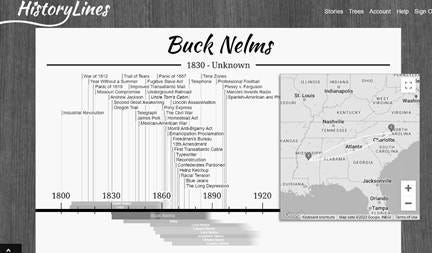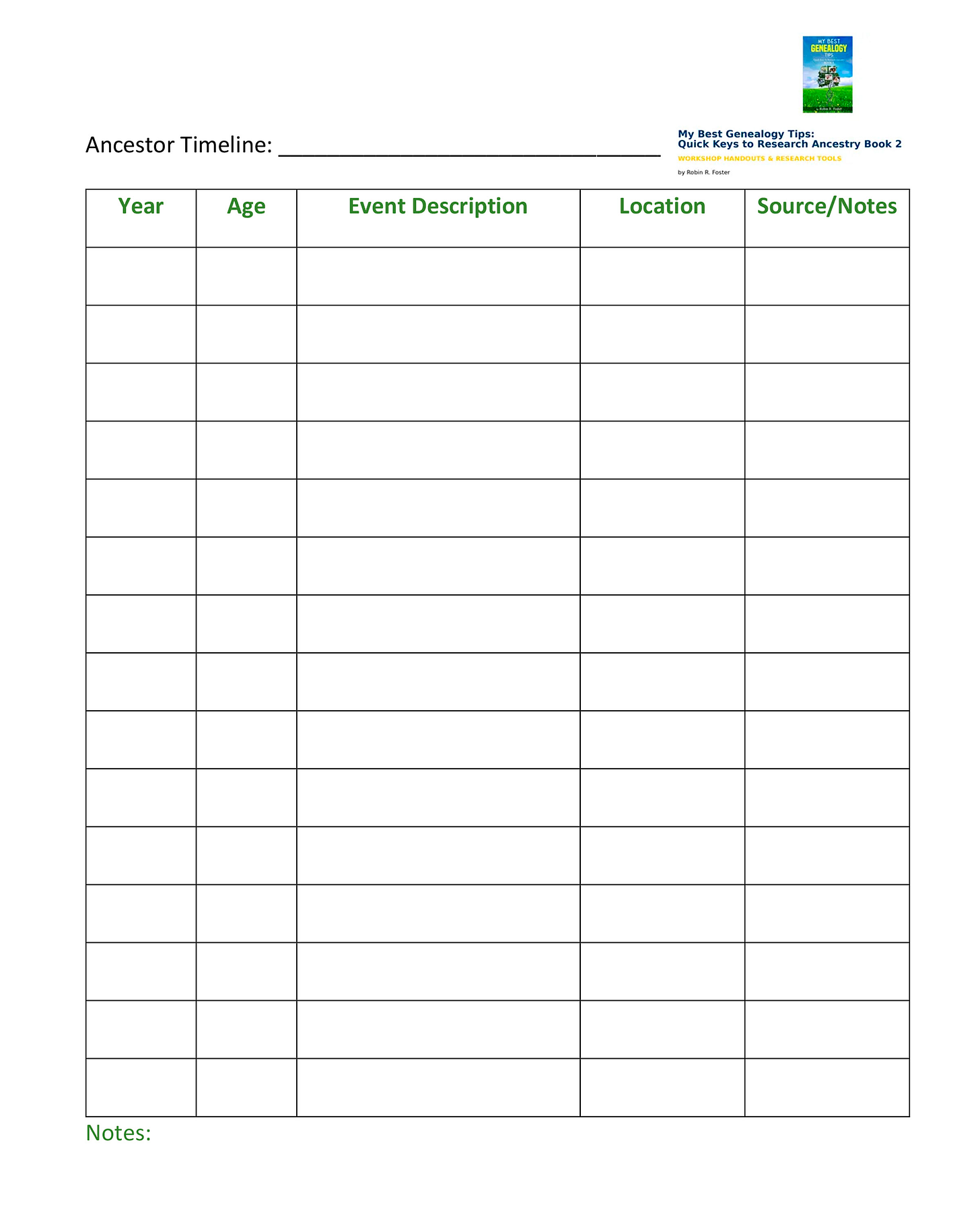📘 Book Tip: Telling a Story Through Time
The Value of a Genealogy Timeline
A timeline provides the dates and places of important events, helping to trace a person's life step by step. In my book, My Best Genealogy Tips: Quick Keys to Research Ancestry Book 2, I include a few tips that assist you in building a timeline of your ancestors’ lives.
Below you will find how we use timelines in genealogy research:
HistoryLines
The purpose of a timeline is that it gives dates and places of events. Plus, we have found one that goes way past the minimum. It is at HistoryLines.com. You share your familysearch.org or ancestry.com account, and HistoryLines.com makes the timeline for you. You can also add events to your timeline. Even historical events are added. This excites us:
What excites us most is being able to thoroughly give everything for each event. We created them, and they are endless. We give this timeline company the biggest thumbs-up.
Flawed Assumptions
Flawed assumptions in genealogy usually lead you down the wrong path with a lot of wasted effort and time. For example, some researchers assume names have never changed or were always spelled the same. Others do not study boundary changes and miss documentation generated in the parent localities (ex. former districts or counties). Sometimes researchers get stuck because they do not use a timeline that helps point to events which can be documented.
1. Consider name variations: It is possible that centuries ago, your ancestor used a different variation of his name. See Research Wiki: Name Variations in the United States Indexes and Records.
2. Begin with the boundaries. Search your locality at Research Wiki to learn about boundary changes. For example, see South Carolina Maps.
3. Create a timeline that documents historical and personal events that happened during your ancestor’s life. See Research Wiki: US Timelines.
Time and Place
Your ancestor may have moved around a lot. It pays to be thorough in your research. If you identify his parents from his death record and jump to documenting the parents without finding everything else on that ancestor, you may not find one piece of evidence if they did not live in the same area. Instead, figure out what records are available for the timeline of your ancestor’s life. If it is the census, trace that ancestor on each census going back.
Create a timeline of events that you find during the lifetime of your ancestor. Resist the temptation to jump to the next generation because you have found a couple of details. Instead, look for more records to fill in the gaps in the timeline. This will paint a clearer picture of who your ancestor was.
Getting Assistance
When seeking assistance, never ask the nightmare question: “I am trying to find my ancestor in 1623, and I do not know the names of the children. Can you help me find his father?” That question reveals a lot of gaps in the research on the ancestor’s timeline. A great temptation of people who go too fast in research is that they rely heavily on undocumented trees. They become so sure they know the undocumented end-of-the-line ancestor, but they may have adopted the wrong person altogether. It is the “Everyone else shows the same person on their tree too, so it must be right” syndrome. Hopefully, you discovered the benefits of not being in a big rush to research the most important people - your family.
Local history librarians have begun to receive many requests for help with genealogical research. Be courteous of their time and be generous with paying requested fees. You may find that it would be worth your time to pay to have the same access to resources as a resident, especially if resources are not accessible online. Create a timeline of your ancestor's life for easy reference, and search the resources suggested here in search of your ancestor.
Does That Cemetery Have My Ancestor?
Local cemeteries should be charted on a timeline and a map. Consider studying local cemeteries around the time frame when family members were buried there. You may find clues from the local history and the genealogy of earlier generations.
If you found this to be helpful, then check out the rest of the tips in My Best Genealogy Tips: Quick Keys to Research Your Ancestry.
🏛️ Ancestor Timeline Worksheet
"A timeline provides the dates and places of important events, helping to trace a person's life step by step."
Instructions:
Use this worksheet to organize the key life events of one ancestor. Fill in the year, their age at the time (if known), the event description, the location, and any notes or sources. This will help reveal patterns, gaps, or next research steps
.








https://generationsgenealogy.com.au/blog/ has a running series on timelines. It’s in Australian but it’s quite interesting to follow along. Cheers.